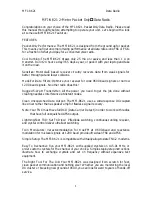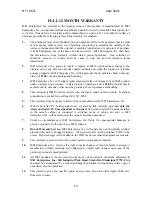
MFJ-8621 Data Radio
7
Figure 2
Monitoring Incoming and Outgoing Signals with a Scope
Two-Way Deviation Monitoring:
In addition to monitoring TNC output at pin 5, you may also monitor both incoming and
outgoing Packet signals passing through your station by connecting an oscilloscope to
the RX-AFSK line at pin-4. RX-AFSK also appears at the "monitor" or "speaker" jack on
most TNCs. Use 1-V/div V-sens and 1-ms/div H-time base. To set TX deviation while
monitoring RX-AFSK, first note the waveform height of average off-air signals (2.2 V p-p
is typical for 3-KHz deviation). Next, key the MFJ-8621 transmitter via the CALIBRATE
function on your TNC--and adjust TNC output (TX-AFSK) for a waveform of about the
same height.
Confirming Deviation:
If a node in your area uses the X-1J2 version of theNET, you can take advantage of that
station's built-in deviation meter to confirm the accuracy of your setting. Anytime you
experience consistent difficulty connecting with local stations, you should suspect
improper deviation level as a possible cause.

































